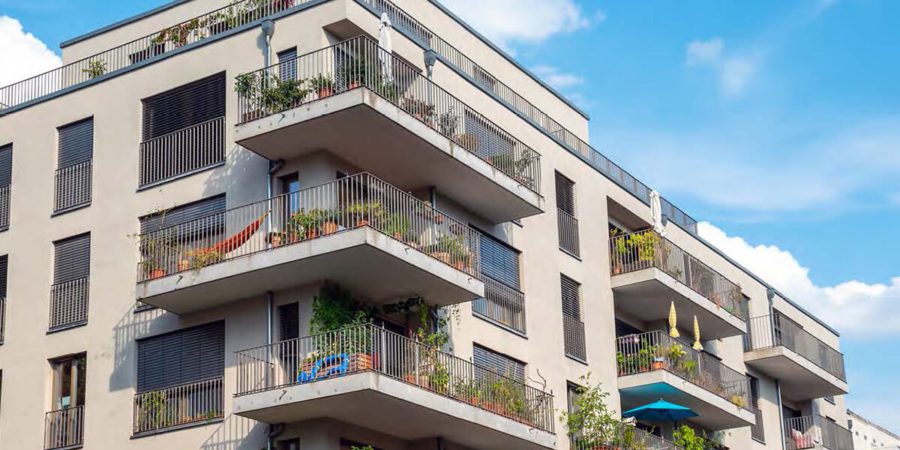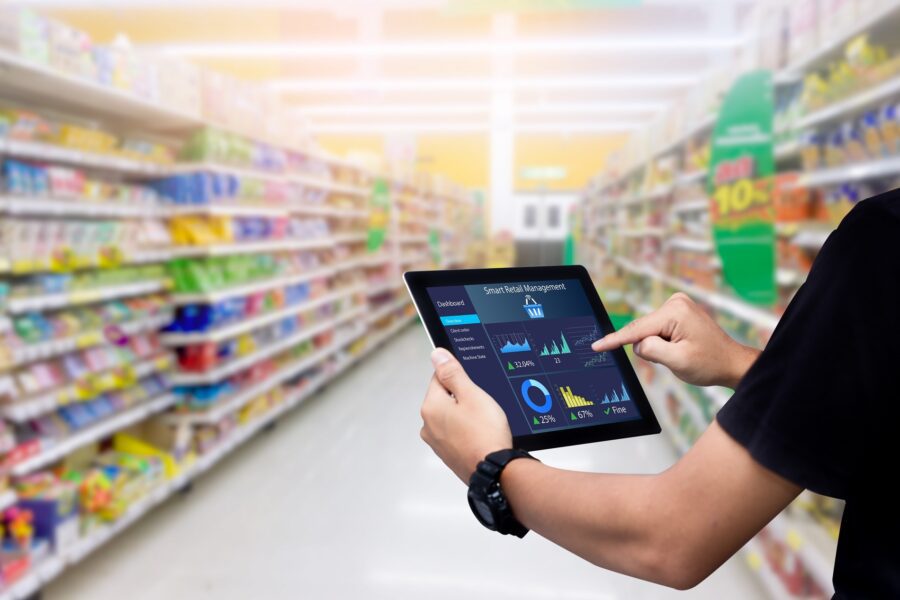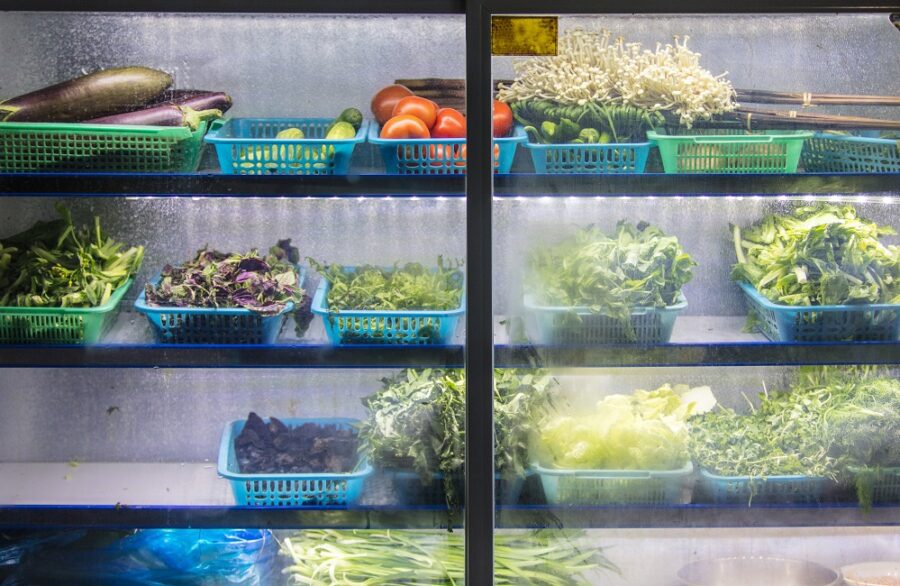
Our Blog
What is Curbside Pick Up And Is It Right For My Company?
Written by: Parcel Pending
7 Min Read
Published: September 5, 2019
Updated: April 4, 2023
It all started in 1921 when the first carhop drive-in restaurant appeared.1Now, instead of roller skates and burgers, there’s curbside pickup—the act of picking up online purchases without stepping out of your car. While not entirely the same, one could argue that a curbside service, like Buy Online, Pick Up in Store (BOPIS), is the logical and technological extension of drive-ins and drive-thrus.
Curbside Meaning: What is Curbside Pickup?
From enhancing their website functionality to creating effective customer service strategies for in-store shopping, companies are constantly looking for ways to create a seamless retail customer experience. A relatively new addition to the spread of options at retailers’ disposal is curbside pickup service.
Curbside pickup service is when retailers allow customers to place an online order for pick up at a local store. When the order is ready, the consumer parks in a designated area near the store or pickup location, and a store associate brings the curbside pickup order out to the consumer’s vehicle. The best part? Customers don’t even have to leave their cars with this convenient curbside pickup service.
Because of the convenience this provides for shoppers, this option has become an effective way for retailers to create or enhance their omnichannel retail strategy. Retailers providing this service have noted that many of their stores have seen an uptick in sales, especially given home delivery delays caused by the pandemic. A quick pitstop at the grocery store to grab food or to the mall to grab an online purchase means that customers can get a product on the day they order it instead of waiting days for a delivery to arrive on their front porch.
Who Offers Curbside Pickup?
Major retailers were the first to throw their support behind curbside pickup and believe in its importance for the future of customer experience. Big players and other participating retailers like Nordstrom, Target, Walmart, and CVS started offering the service as a way to provide greater convenience for their customers and draw them away from competitors.
With the pandemic, this option has been critical to business continuity, convenience, and – most importantly – customer safety.
Now smaller retailers, restaurants, and even grocery stores, who previously struggled to participate due to a lack of infrastructure, have also adopted the service. These businesses often designate nearby parking spaces at “curbside pickup loading zones”. Once a patron arrives, they call the restaurant, retailer, or grocery store, and an employee brings out their curbside pickup order.
Why is Curbside Pickup So Popular?
When it comes to a new retail service trend, creating a seamless experience is crucial, and success often depends on how convenient the service is for customers2. And what is curbside pickup, but the essence of convenience? As long as retailers can reasonably afford to offer and scale this service, customers will be ready and willing to take advantage of it.
Other benefits of curbside pickup include:
- Improved Customer Experience – Customers can get all the benefits of a retail store without having to enter the physical building. Grocery or errand days can take a fraction of the time, without compromising on safety for customers or store employees.
- Brand Loyalty – Customers support and appreciate expediency. In fact, Salesforce reports that online sales from Dec. 1-14 in 2020 grew 52% year over year for U.S. retailers that offered curbside, drive-thru, and in-store pickup options3. In essence, brands that offer curbside pickup or other BOPIS options have become synonymous with convenience.
- Low-Cost Delivery – Curbside pickup has been heralded as a cheaper alternative to delivery. Companies can even offer this instead of free shipping (which many customers have come to expect). For customers, this is an alternative to paying for online delivery services like Shipt, Doordash, and Uber Eats.
Does Curbside Pickup Drive Consumers into Stores?
Previously, many brands were hesitant to adopt curbside pickup long-term because it goes against an important tenet of consumerism: retailers want people to come inside their stores and make additional purchases (aside from the item or items they initially came for). However, this is a limited way of assessing curbside pickup as a BOPIS option. Customers now expect multiple options for how they can claim their purchases. As such, it’s not surprising that the ICSC reported that 88% of consumers prefer to shop with retailers who have both physical stores and a robust online presence.
Consumers enjoy the convenience of online shopping, but also like the ability to easily (and cost-effectively) make returns or exchanges at a nearby brick-and-mortar location4.
The same applies to order pick-up. A customer in a hurry might prefer the convenience of curbside pickup and having a product delivered directly to their vehicle. Another customer may choose to come into the store and see an item in person before they make the decision to purchase. Providing multiple options for consumers enables retailers to chase a “halo effect” and further blur the line between virtual and physical retail.
Streamlining Curbside Delivery
For companies to offer curbside delivery in an efficient, streamlined manner, they need two main components:
- Labor Force – Fulfilling a customer’s order and running it out to the parking lot takes time. This is often why smaller retailers struggle to keep up with the demands caused by curbside delivery, especially when there are only two or three employees present in a store at a given time.
- Inventory Tracking – The curbside delivery process can become complicated quickly. For example, if a customer orders ten items for curbside pickup, two of which are out of stock, and one that’s already in another shopper’s cart. Who gets the in-demand item? And what about the out-of-stock items? Inventory information must be available in real-time both for the customer shopping online and the employee grabbing the order.
Using Parcel Lockers
For companies who are interested in implementing or expanding their curbside pickup, using a smart electronic locker can improve efficiency, make online ordering easier, and reduce costs.
- Tracking Orders – When fulfilling several orders at a time, it’s easier to keep track of each item and order if it has a designated locker. When a customer arrives, they can punch in their unique access code, and leave with their purchase in hand. No staff time wasted sorting through orders, and the retailer has full visibility over when the order was placed in the locker as well as when it was picked up.
- Combine with Designated Parking – Instead of having employees wait outside for customers to arrive, retailers can change the definition of curbside pickup. Designated parking spots can be positioned near smart lockers. This way, customers can pull up, pick up their order from their bin or a store associate, and drive off.
- More Options for Consumers – Lockers don’t have to replace curbside pickup; rather they can supplement it. It’s no wonder home improvement retailer Lowe’s chose lockers for all their U.S. stores. “With more than 60% of online orders picked up in our stores, [lockers] gives customers one more option and the added convenience and flexibility to control how and when they get that order,” said Joe McFarland, Lowe’s Executive Vice President of Stores, about the decision to invest in smart lockers5.
- Contact-Free Online Order Pick-Up – In less than a minute, a customer can retrieve their online order with zero face-to-face interaction. This can help retailers provide a contactless alternative to curbside pickup while also creating a scalable, convenient BOPIS experience.
Is It Right For Your Company?
Now that you know the difference that curbside order or store pickup options have made for companies, you may be wondering “is it time for my company to offer such a service?”. If your company is considering curbside parking or curbside collection, consider the following questions:
- Do you have the resources to offer curbside pickup and do it well? This includes having dedicated employees to shop for and pre-package products for pickup.
- Do you have curb space for a station where employees can load customers’ cars when they arrive?
- Do you have the technological infrastructure to regularly update store inventory?
These are the keys to success with curbside parking and curbside pickup. Providing customers with this valuable service can significantly improve customer relationships and give your business a leg up against competitors.
If your business is looking to adapt your order fulfillment strategy to better serve your customers, curbside pickup is the perfect place to start!
Buy Online, Pick-up in Locker (BOPIL®) by Parcel Pending can help you improve your customer experience by making curbside and in-store BOPIS faster, safer, and more flexible. Our industry-leading contactless delivery solution can even seamlessly integrate with your existing apps and systems to help you provide a convenient, secure order pick-up experience for your shoppers. Learn more about our retail parcel locker solutions here.
Sources:
- Wikipedia. Carhop. https://en.wikipedia.org/wiki/Carhop
- Nielsen. Six Factors Driving Consumers’ Quest for Convenience. (2018, August 15). https://www.nielsen.com/eu/en/insights/article/2018/six-factors-driving-consumers-quest-for-convenience/.
- Evans, Katie. Digital Commerce 360. Holidays and health concerns continue to drive online sales in December. (2020, December 22). https://www.digitalcommerce360.com/article/coronavirus-impact-online-retail/.
- International Council of Shopping Centers. (2018). The Halo Effect [Report]. Retrieved from: https://www.icsc.com/thehaloeffectii
- Lowe’s Home Improvement. (2020, September 22). Lowe’s Leverages Innovative Technology to Launch Contactless Pickup Lockers Nationwide [Press Release]. Retrieved from: https://corporate.lowes.com/newsroom





